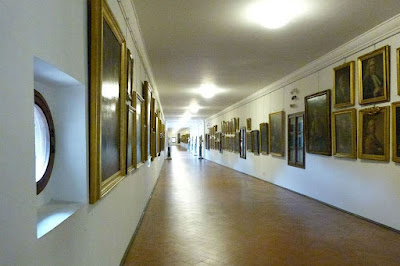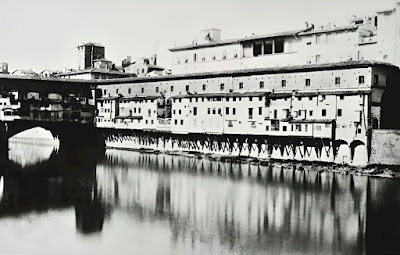The newly renovated Vasari Corridor is set to open to the public in May 2024. As my astute and observant readers might know, accessing the Vasari Corridor—which stretches from the Palazzo Vecchio, through the Uffizi Galleries, across the Ponte Vecchio, and ends at the Pitti Palace in Florence—has historically been difficult. This reopening marks a significant moment, exactly 450 years after the deaths of its creators: Grand Duke Cosimo I dei Medici, who commissioned the Corridor for his son Francesco I‘s wedding, and the architect Giorgio Vasari, who designed and built it, dying just two months after Cosimo I on June 27, 1574.
Visitors will no longer need to book a timeline or be accompanied by a guide to access the renovated Vasari Corridor.
The renovated Vasari Corridor
While the increased accessibility is a great improvement, I must express some sadness over the relocation of the world’s largest and oldest collection of self-portraits that once adorned the Corridor walls near the Pitti Palace. This impressive collection, which was intimately connected with the Corridor’s creators, has been moved to the Uffizi Galleries. In their place, visitors will now see a series of Roman epigraphs that relate to Florence’s founding by Julius Caesar in 59 BC and its later role as the capital of the VI Roman Legio, which encompassed Tuscany and Umbria. These marble markers are significantly more durable than the paintings, so it seems we must accept this trade-off for the benefit of unrestricted access to the Vasari Corridor.

The Vasari Corridor before renovation.
This is certainly not the first renovation of the Vasari Corridor. Up until the late 19th century, artisan workshops occupied the arches supporting the structure between the Uffizi and the Ponte Vecchio, which were removed in the 1880s.

View of the Vasari Corridor in the 1880s with workshops still in place.
Learn more about the Vasari Corridor.
|

Author: Anna Maria Baldini




